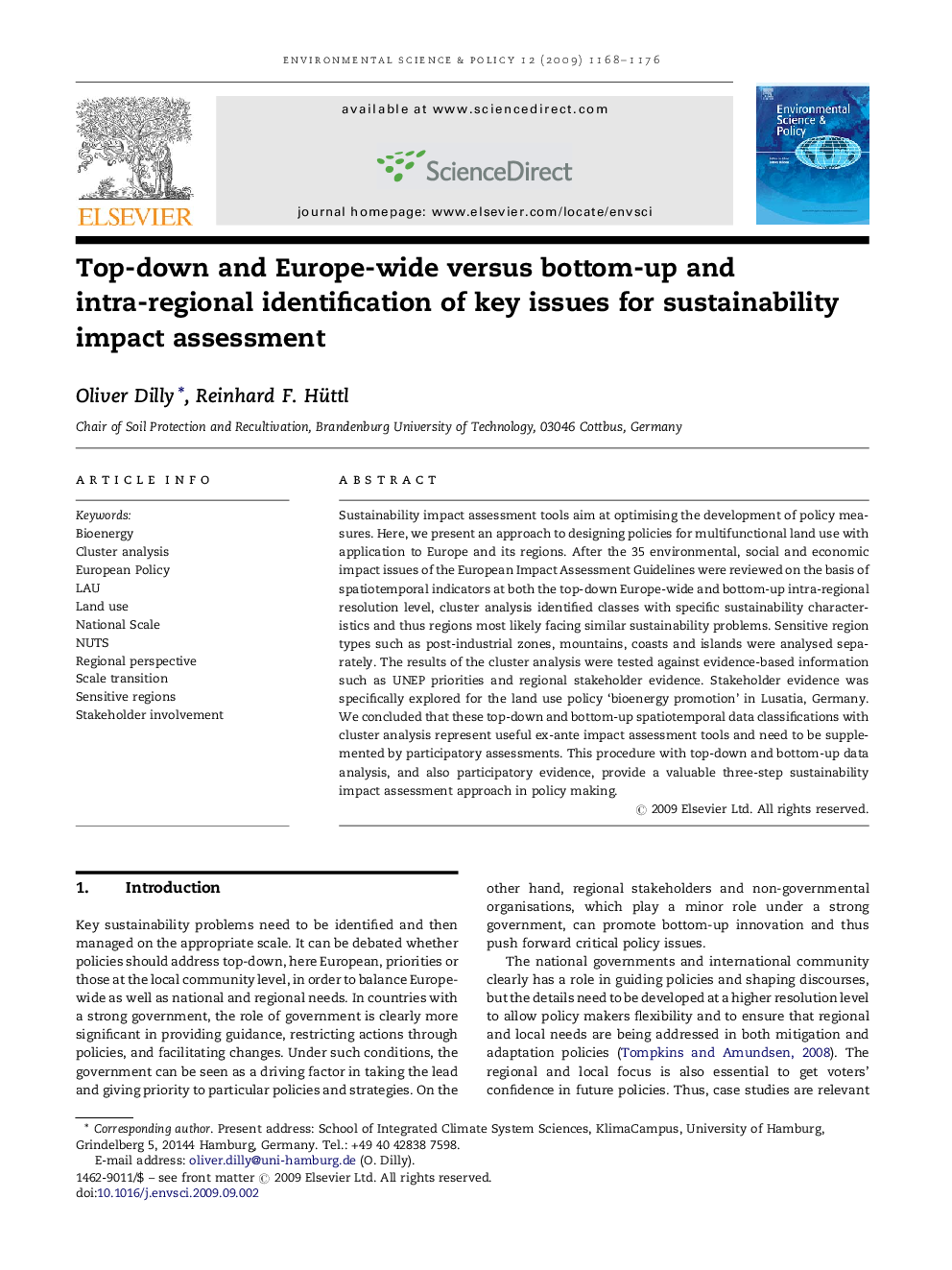| Article ID | Journal | Published Year | Pages | File Type |
|---|---|---|---|---|
| 1054055 | Environmental Science & Policy | 2009 | 9 Pages |
Sustainability impact assessment tools aim at optimising the development of policy measures. Here, we present an approach to designing policies for multifunctional land use with application to Europe and its regions. After the 35 environmental, social and economic impact issues of the European Impact Assessment Guidelines were reviewed on the basis of spatiotemporal indicators at both the top-down Europe-wide and bottom-up intra-regional resolution level, cluster analysis identified classes with specific sustainability characteristics and thus regions most likely facing similar sustainability problems. Sensitive region types such as post-industrial zones, mountains, coasts and islands were analysed separately. The results of the cluster analysis were tested against evidence-based information such as UNEP priorities and regional stakeholder evidence. Stakeholder evidence was specifically explored for the land use policy ‘bioenergy promotion’ in Lusatia, Germany. We concluded that these top-down and bottom-up spatiotemporal data classifications with cluster analysis represent useful ex-ante impact assessment tools and need to be supplemented by participatory assessments. This procedure with top-down and bottom-up data analysis, and also participatory evidence, provide a valuable three-step sustainability impact assessment approach in policy making.
